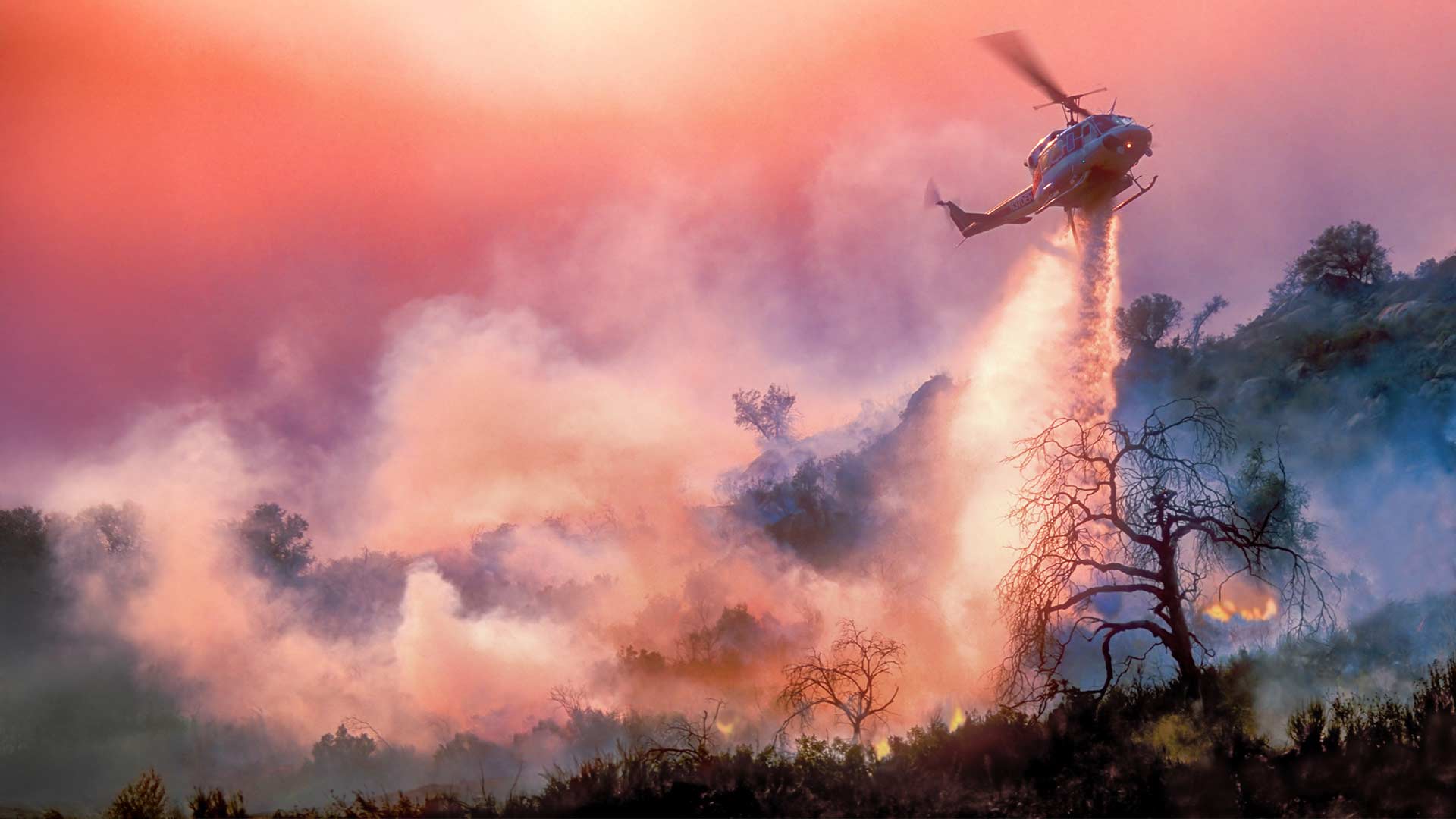The recent California wildfires have once again put the unique challenges of wildfire risk into the national spotlight. Insurers are under increasing pressure to balance accurate risk assessment with fair pricing and sustainable coverage. At the same time, policyholders are concerned about rising premiums and the availability of insurance in high-risk areas. However, the solution isn’t retreating from these regions, but leveraging advanced technology, like geospatial analytics, to manage risk more effectively, enhance mitigation efforts, and improve outcomes for both insurers and policyholders.
Geospatial analytics has emerged as a critical tool in wildfire risk management, transforming how insurers assess, price, and mitigate risk. By integrating satellite imagery, AI-powered predictive modeling, and real-time environmental data, insurers can gain a granular, property-level view of wildfire vulnerability. This data-driven approach allows for more precise underwriting, proactive risk mitigation, and faster claims resolution, ultimately benefiting policyholders with fairer pricing, greater transparency, and improved recovery support.
The Role of Geospatial Analytics in Wildfire Risk Management
For decades, insurers have relied on historical data and broad risk zones to assess wildfire exposure, but this static approach is no longer sufficient. Climate change, urban expansion, and evolving wildfire behavior demand more dynamic, real-time solutions.
Geospatial analytics provides three key advantages that enable insurers to better protect policyholders and ensure long-term insurability in wildfire-prone regions:
- Hyper-Localized Risk Assessment: Instead of assigning risk based on generalized zones, geospatial analytics allows insurers to analyze individual property characteristics, such as vegetation density, terrain, wind patterns, and historical fire activity. This enables precise underwriting and pricing, ensuring policyholders in lower-risk areas aren’t unfairly penalized by broad risk classifications.
- Proactive Risk Mitigation and Policyholder Engagement: Wildfire risk isn’t just about location—it’s about preparedness. Insurers can use geospatial analytics to identify vulnerabilities at the property level and provide policyholders with personalized risk mitigation strategies. For example, insurers can recommend clearing defensible space around homes, identify structures that would benefit from fire-resistant materials, and provide real-time alerts when wildfire threats emerge. By helping policyholders reduce risk, insurers can minimize losses while demonstrating proactive customer support, which is crucial for retention in high-risk markets.
- Faster, More Accurate Claims Processing: After a wildfire, policyholders often experience delays in claims assessments, leading to frustration and financial strain. Geospatial analytics streamlines this process by using aerial and satellite imagery to quickly assess damage, eliminating the need for on-the-ground inspections in many cases. This means, faster claims resolution, allowing policyholders to rebuild sooner, more accurate, objective damage assessments, reducing disputes, operational efficiencies for insurers, lowering costs and improving customer satisfaction.
How Policyholders Benefit from Geospatial Analytics
The true value of geospatial analytics isn’t just in how it helps insurers. It’s in how it improves the experience for policyholders. Insurers investing in this technology can:
- Ensure Fairer Pricing: With precise, property-specific risk assessments, insurers can avoid blanket rate increases and offer more tailored pricing models. This prevents lower-risk policyholders from overpaying due to outdated, broad risk categorizations.
- Provide Greater Transparency: Policyholders often feel uncertain about how their wildfire risk is assessed and why their premiums change. With geospatial analytics, insurers can provide clear, data-backed explanations, improving trust and policyholder confidence in the underwriting process.
- Enhance Policyholder Support & Preparedness: Instead of merely reacting to wildfires, insurers can empower homeowners and businesses with proactive insights. Real-time monitoring and early warnings can help policyholders take action before disaster strikes, reducing losses and improving overall safety.
- Accelerate Claims Payouts in Critical Moments: When a wildfire does occur, policyholders need fast access to funds for temporary housing, repairs, and rebuilding. Geospatial-powered claims assessments ensure a quicker, more seamless process, preventing delays that can add unnecessary hardship.
Why Insurers Must Act Now
As wildfires grow more severe, insurers cannot afford to rely on traditional risk models that may overestimate or underestimate exposure, leading to either excessive rate hikes or unexpected losses. Geospatial analytics provides the precision and efficiency needed to balance risk, protect policyholders, and maintain a sustainable presence in high-risk regions. Furthermore, as regulatory scrutiny over wildfire coverage intensifies, insurers that adopt data-driven, transparent underwriting practices will be better positioned to comply with evolving guidelines while maintaining policyholder trust.
Is Your Wildfire Risk Strategy Ready for What’s Next?
The reality is that wildfires aren’t going away, but insurers that embrace geospatial analytics can better protect their policyholders while ensuring long-term market viability. Investing in geospatial analytics is not just a technological upgrade. It’s a strategic necessity for insurers looking to provide sustainable coverage, improve risk management, and strengthen policyholder relationships.
Insurers can deliver real value to the people who need it most by embracing property-specific risk assessments, proactive policyholder engagement, and faster claims processing. The future of wildfire insurance depends on data-driven solutions that benefit both insurers and policyholders alike. Geospatial analytics is that solution.
